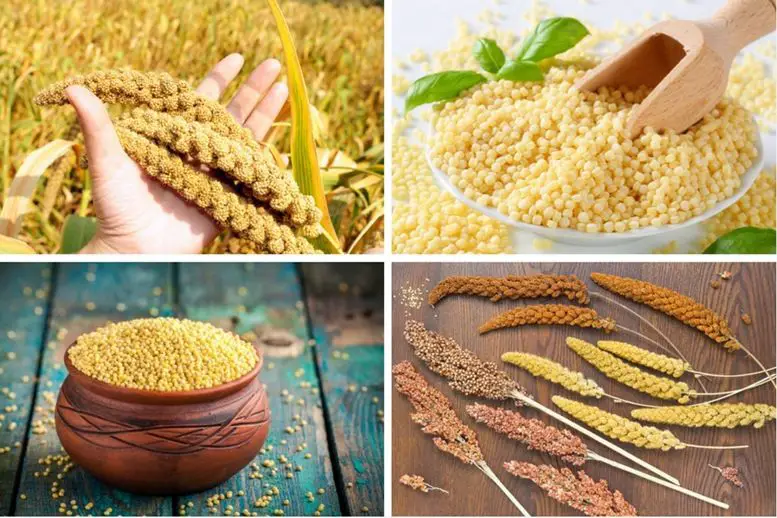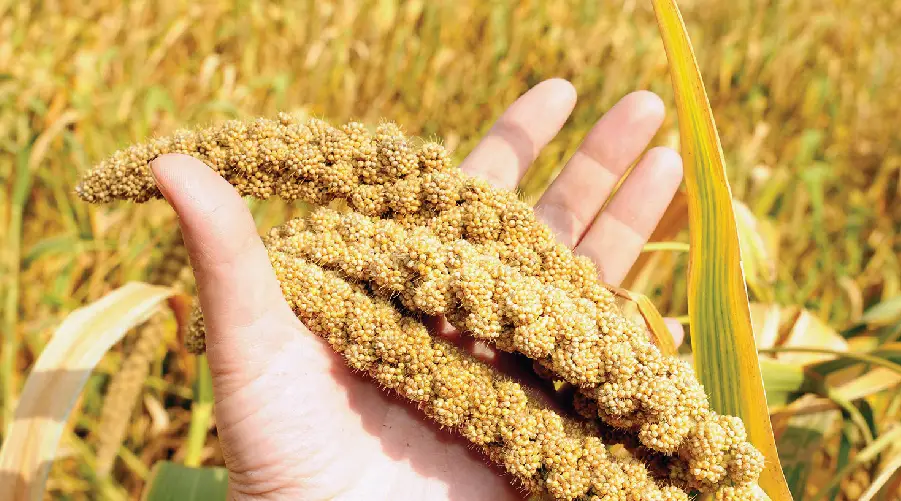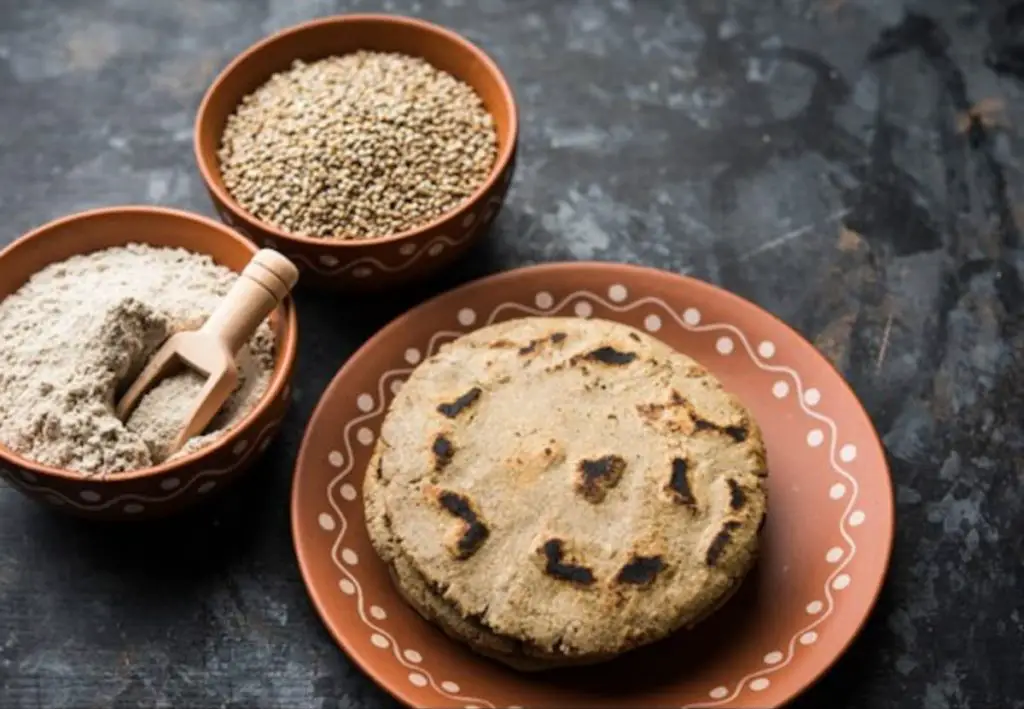What are the side effects of millets?
Jump To:
There are numerous millet benefits that’s why Millet grain is gaining a lot of popularity amongst all health and diet-conscious people. The majority of the youngsters are also realizing the advantages of millets. The millet benefits and risks too will occur on unconscious consumption. But they do not know millets side effects? We assume not! Let’s get into the millets side effects and tips to avoid them. Check out more tips for cooking millet apart from simple tips in this read.

Eating smart is the need of the hour.
Maintaining weight is the need of the hour.
Staying healthy is the need of the hour
There are many people out there who are just hoarding up this super grain without knowing its benefits or side effects. However, that is not the right way to go about a millet diet plan for weight loss or just consuming millet in general.
Here we shall study some millets side effects — how it benefits us and how the overdose can harm us.
What are the benefits of consuming Millet?
- The planted seeds are ready in a brief timeframe of 70 – 120 days.
- Effortlessly cultivated unlike rice and wheat which require numerous sources in terms of soil ripeness and water, millets can be effectively filled in dry locales with the least amount of sources.
- It has a brilliant source of nutrition as compared to other cereals and grains.
- It has an excellent cultivation framework and is cultivated throughout the year. Although it is sown during the monsoon season, it is cultivated throughout the year without any water harvest.
What are the different types of millet?
It is not known to many that millet is a collective name for several major and minor small grains. These are small-grained cereals that are highly in demand owing to its benefits. Here are some names that come under millets in large.
- Jawar
- Bajra
- Ragi
- Foxtail millets
- Quinoa
- Barnyard millets
- Little millets and
- Kodo millets
What are the side effects of millet?
Little do many know about millet’s side effects. So, here we go!

1. You cannot completely switch over to millet
Completely switching your diet to millet is not a good idea. Although this cereal requires less water for cultivation, it cannot completely replace either rice or wheat. Also, you should never depend entirely on a particular cereal, whole wheat can be considered an exception.
You should always include varieties of grains in your diet depending on your health, in order to consume a balanced diet.
2. Oxalates in millets
Millets particularly pearl millet are high in oxalates. This can lead to kidney stones. The correct cooking technique should be followed to keep this issue away. Many cooking tutorials show the exact ways to cook the millets properly for consumption.
3. Enzymes and Phytic Acid
Millets contain certain catalyst inhibitors and phytic acid. Phytic acid goes about as a fastener that ties significant minerals and does not permit the body to assimilate the supplements and minerals. Phytic acids are considered supplements. The correct cooking technique is an unquestionable requirement to beat this issue.
4. Blockages
As millets are high in fiber, overutilization may prompt stomach hurt, swelling, and obstruction. Thus, creating blockages in your body system. Therefore, it is vital to consume the right quantity.
5. Goitrogens in millet
Goitrogens are substances that stifle thyroid action and can prompt goiter. Also, goitrogens in millets block iodine assimilation which causes thyroid. Studies have shown that individuals who consume only millets as their staple diet can suffer from either thyroid or kidney stones. Thus, to avoid such situations, it is highly recommended to include other grains as well in your daily diet.
6. Deficiency of iodine
Consuming millets daily and in large doses can lead to a deficiency of iodine. This is not healthy for your body or for your health. The deficiency of iodine leads to severe health issues like anxiety, enlarged glands, thyroid, and kidney stones. Not many are aware of these millets side effects.
Millets diet plan for weight loss
The majority of the people who are becoming health conscious are lately learning about small grains like millets, their nutritional value, and health benefits. Since the health benefits, possessed by millets surpass a handful of millets side effects consuming millets daily but in limited quantities is a great source of nutrition. The introduction to a millet diet plan for weight loss will help you understand the benefits of millets in your diet.

Here is how you can incorporate millets into your healthy diet plan:
- Since millets help in better digestion, it is recommended to consume them in small quantities on a daily basis. You can incorporate millets in your salad, which is considered one of the best ways to consume them.
- Millets are basically small grains that can be used as a roasted snack during tea time. You can simply roast a handful of millet grains and sprinkle some salt and pepper on it. There you go with your millet snacks!
- You can include millets in your breakfast by adding them to your sandwich spread along with other veggies. This sandwich will be light to eat and extremely full of healthy nutrients.
Just like other healthy cereals, the balance should be maintained in the event of millets as well. Consuming them 3-4 times each week is protected to devour millets while millets like Ragi and Jowar can be consumed every day.
Overall, an adult should consume 30 – 40 grams of millets each day. See that the amount of millet you are consuming doesn’t surpass the recommended level. Make sure to keep yourself hydrated all along while burning-through millets as the fiber assimilate an excess of water from the body and can make your body dry from the inside.
What happens if we eat millets daily?
You can eat millets daily but not just millets. You need to add millets in controlled proportions in your diet. There are myriad health benefits of millets. Regular consumption of millets is beneficial for postmenopausal women suffering from signs of heart ailments, high blood pressure, and high cholesterol. They help women to combat the occurrence of gallstones because they are rich in fiber.
Can we eat millets daily instead of rice?
Millets are of several varieties, and most of them are used in the replacement of rice because they are gluten-free and are considered the best alternative for rice. Millet is a healthier version because it is rich in protein and fiber, which is much more as compared to rice.
Is millet poisonous?
Millets are small-seeded, fast-growing summer annual grasses used for hay, pasture, and silage. Because millets do not produce this toxic compound, they can be a safe alternative to sudangrass pastures. Foxtail millet is used primarily as a forage crop for silage or hay.
Are millets difficult to digest?
Millets are non-glutinous and non-acid-forming foods which makes them easy to digest when eaten in the right quantity.
How much millet is too much?
Too much millet varies from 2+ teaspoons a day to half-and-half millet with other seeds. Millet is fattening, addictive, and is lacking in vitamins and minerals. Millet addiction can lead to budgies refusing other food until they starve. Feeding in moderation means that your budgie gets all of the advantages.
How many times we can eat millets in a day?
According to the ICMR-National Institute of Nutrition, Hyderabad, one should consume about 270 gm of Cereals including Nutri-Cereals(Millets). So, if you are taking millets then you can take about 1/3 rd(90-100gm of millets per day) of the recommended quantity.
Does millet cause gas?
As with everything else, eating in moderation is the key (too many millets can cause stomach ache, bloating, and constipation),” says Husain, adding that you should buy unpolished millets. One reason people don’t like millets is the taste.
Can millet be consumed at night?
Myth 2: Eating rice at night will make me fat Fact: High-carb foods that are digested to form glucose include rice, wheat, ragi, and millets. These foods should not be consumed during the day when glucose more readily converts into fat.
Does millet need nitrogen?
Nitrogen fertilizer is often required for the profitable production of proso millet. Proso millet planted following another crop, such as wheat, usually has a higher nitrogen requirement than after summer fallow due to lower residual soil nitrate.
Does millet have prussic acid?
Pearl millet and foxtail millet have very low levels of cyanogenic glucosides. A few other plants also can produce prussic acid, including cherry trees. Young, rapidly growing plants will have the highest levels of prussic acid. The cyanide-producing compounds are more concentrated in young leaves.
Is millets heat for body?
Thinai (Foxtail millet) generates heat; so, it should be consumed along with ghee or buttermilk. This also ensures good absorption of nutrients.”
Which millet is best?
The Top Types Of Traditional Millet With Health Benefits
- Pearl Millet: Good for Insomnia.
- Kodo Millet: Good for Diabetics.
- Foxtail Millet: Good for Thyroid.
- Sorghum: Improves Digestive Health and Prevents Cancer.
- Barnyard millet: Good for Weight Loss.
- Little Millet: An Indispensable Good Fat.
- Finger millet
